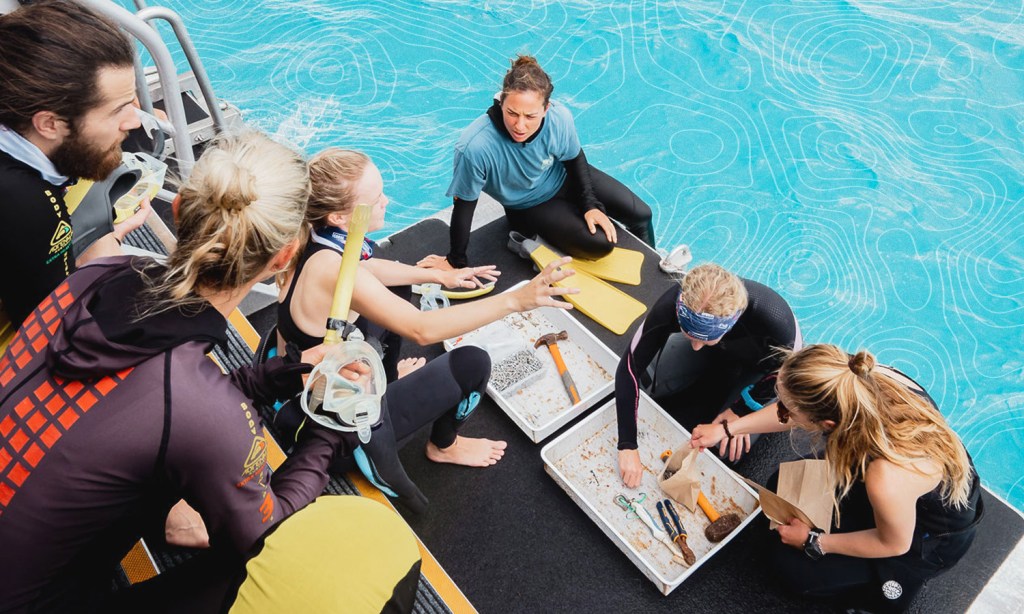In the same week that world leaders were gathering in Egypt to, ultimately, achieve very little in mitigating the impact of climate change, I was with a team on the Great Barrier Reef who are fighting to save one of our most precious and fragile natural wonders.
The reef has been literally and metaphorically battered over the past three decades, losing half of its coral in that time. For an area roughly the size of Japan, it’s a devastating loss to global biodiversity. Pollution, shipping, and fishing are all threats to the reef, but far and away the greatest impact is being caused by climate change driving up ocean temperatures.
Right now, a frenzy of scientists, tourism operators, government agencies, and non-profit groups are desperately seeking answers as to how the reef can be protected, revived, and made resilient in the face of ongoing climate change — if it can at all.
Successive governments have poured billions of dollars into conservation work that aims to deliver some of these answers while simultaneously skirting around the fact that Australia, as one of the world’s largest fossil fuel exporters, is also responsible for the problem.
In the weeks since my visit, an old debate has once again reignited at the highest levels of government as UNESCO and the International Union for Conservation of Nature concluded that the Great Barrier Reef should be placed on the ‘in danger’ list of world heritage sites.
They state that the centrepiece of the Australian strategy, the Reef 2050 plan, is insufficient and in need of an update. In addition, Australia’s hard-won climate legislation to cut emissions by 43% by 2030 will still lead to 2C of warming, essentially sounding the death knell for the reef.
It’s a battle that the former Morrison administration fought hard with UNESCO, sending former Environment Minister Susan Ley on a round-the-world tour to speak with 18 national ambassadors and invite those with UNESCO voting rights on a snorkelling tour.
Now, with a new administration in charge, the tap has once again been turned and an additional $1.2 billion will flow into reef and water quality restoration.
“Australia has stepped up to play our part,” Environment Minister Tanya Plibersek said in response to the UNESCO report.
The problem is that the people on the ground, seeing the impact of climate change and doing their best to try and stop it, would disagree. So too would the scientists who state that the Labor government’s greenlighting of four new oil and gas projects is totally inconsistent with a future where coral reefs exist in anything but aquariums.
Australia is categorically not doing its part in its duty to protect the largest living organism on Earth by limiting man-made climate change. But these are the people who are.
Maximum Resilience
Professor David Suggett is not the kind of person you would expect to hold the academic credentials and scholarly high office that he does. Donning his stinger suit and free diving down to the coral nurseries his team has established on the Great Barrier Reef, he seems more like an aquatic Indiana Jones than a stuffy professor.
But Suggett is, in fact, one of the reef’s most ardent defenders. At the University of Technology Sydney, he leads the Future Reefs programme, a team of 23 scientists working to fill a “huge gap in knowledge of the fundamental biology of corals,” as he put it to The Latch, and how they’re impacted by climate change and other environmental factors.
That knowledge feeds into the Coral Nurture Program, which Suggett also co-founded, which is partnered with nine tourism operators working in Port Douglas, Cairns, and the Whitsundays.
Their strategy is two-fold: identify what makes a reef able to withstand the onslaught of climate change and then get out there and plant those corals to boost recovery rates and give the reef the best chance at surviving what is to come.
“It’s all about maximizing resiliency through proactive restoration,” Suggett said. “With the end goal of making ourselves redundant. We want to be doing this for as little time as possible because it then tells us the reef is hopefully in a state that doesn’t need our intervention”.
In the lab at UTS, at the heart of the University’s new ‘climate change cluster’, experiments are being run on the microbiomes of different coral species, the importance of the interaction with fish and other species, as well as which coral can best withstand environmental extremes.
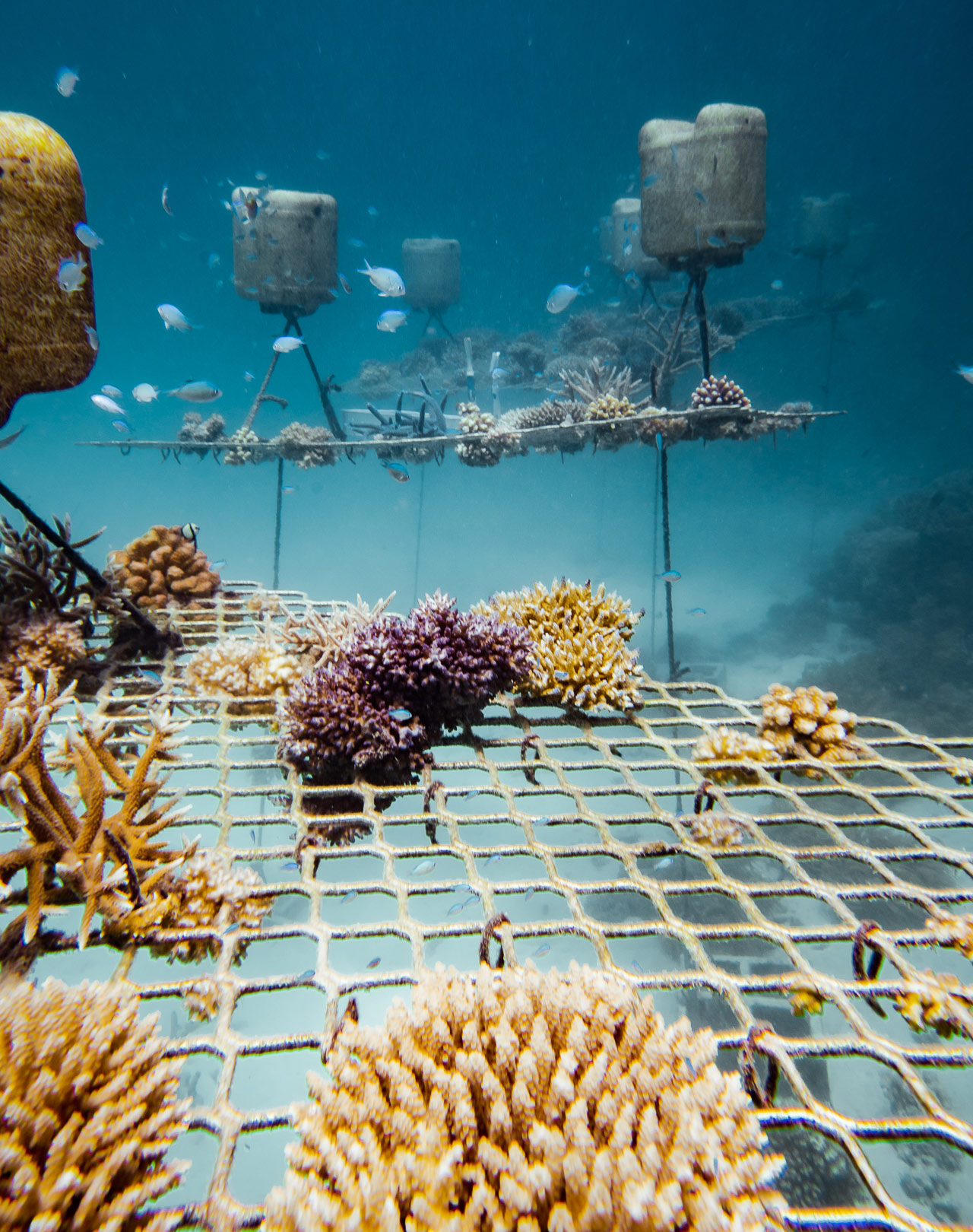
That’s all fed back to the tourism operators in Queensland who use that information when planting. Alongside the reefs, hang Coral Nurture Program nurseries of growing coral that divers clip off and secure to the reef by hand. Given the financial constraints of physically trying to replant areas of the reef that have been damaged by climate change — and that’s most of it — this partnership relies on local operators who are already sailing out to the reef every day to plant coral while they take tourists on dives.
It’s hard to get perspective on just how mammoth the task that the Coral Nurture Program is undertaking here. Imagine if you had to plant, by hand, each individual blade of grass on a football field. Then times that by 70 million.
To be fair, that’s not an accurate representation; the reef is not entirely coral and the coral still there is self-replicating. But still, the scale of the challenge and the current health of the reef requires utilitarian strategising.
“Should we be restoring it back to historical conditions?” Suggett asks.
“If we’re not going to fully solve climate change, and the chances of us cutting our emissions are looking pretty bleak, then we want to ensure that the recovery and the repopulation efforts, whether they’re natural or interventions, equip the reef with resilience.”
That means selecting coral for its ability to withstand future conditions and focusing on areas that have high value to tourism operators or the ability to send coral planula downstream to populate other areas as they spawn. It also means essentially leaving some areas of the reef to fend for itself.
These are the kinds of choices you have to make when the situation is this dire and the problem so vast. The biggest bleaching event in human history occurred in 2016, with almost 30% of the coral on the Great Barrier Reef dying off. Since then there have been four more bleaching events, although none as serious as in 2016.
Bleaching occurs when coral organisms become stressed and reject the colour-giving algae that they live with symbiotically. It doesn’t mean they’re dead, but a bleached coral is a sick coral and successive bleaching increases its chances of dying.
Science tells us a world heated by 1.5C or more above pre-industrial levels will be one in which coral bleaching becomes routine. What the Coral Nurture Program is there to do is to “add capacity and manage local areas of reef in the short term to ensure they have the best resilience when the next wave of bleaching comes through,” Suggett said.
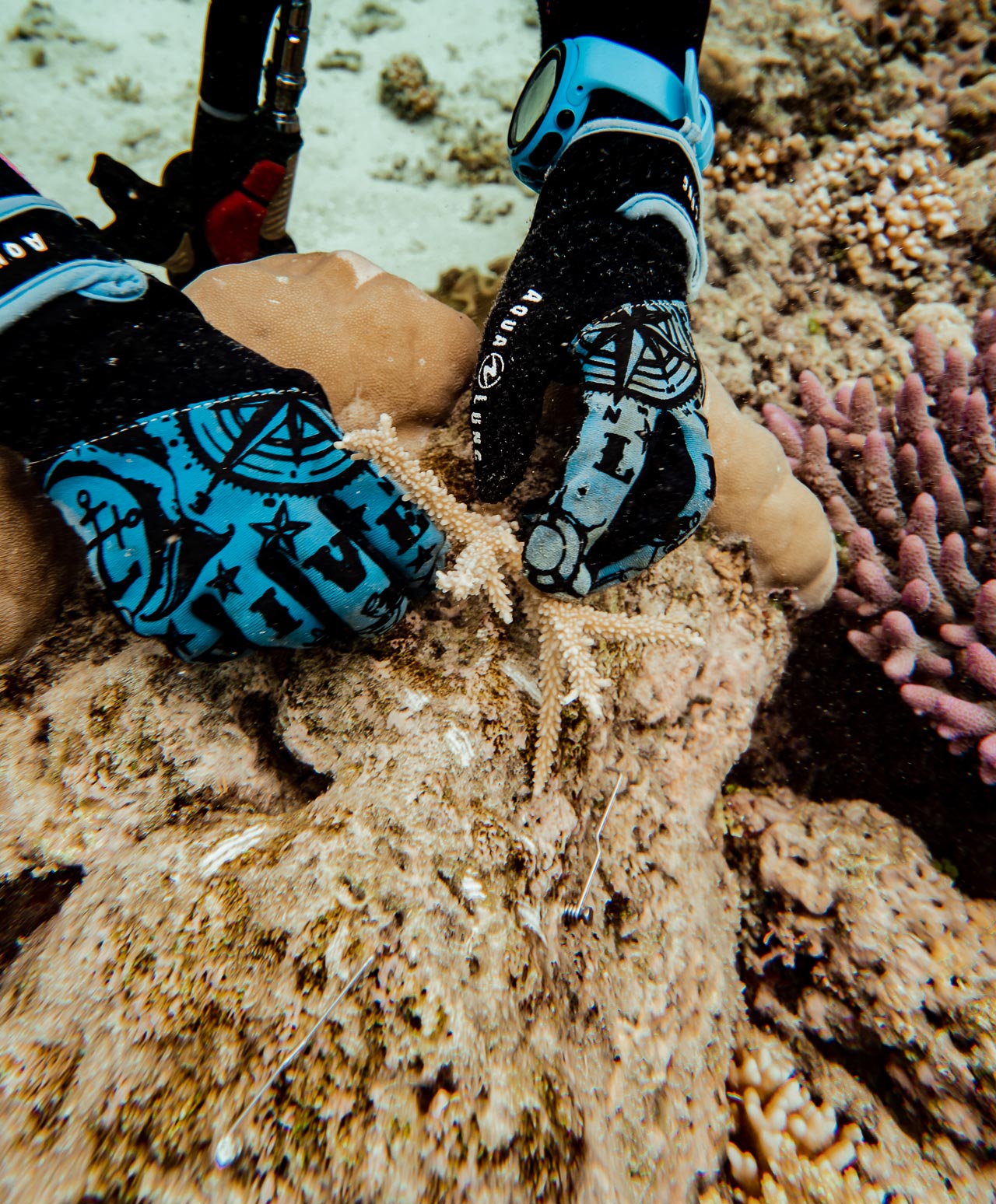
Over dinner, after a day inspecting the reef, I somewhat tipsily compare the work he and his team are doing to the battle of Helms Deep. For the non-Tolkien nerds, at the end of the second Lord of the Rings film, our heroes are fighting an unwinnable battle. The castle they’re defending has been breached and they know they will be overwhelmed, but they fight on. After three days, Gandalf arrives with an army and saves the day.
Right now, Suggett and Co are in that darkest of moments before the arrival of help. They can keep on fighting, and indeed they will, but this war is futile unless urgent help arrives in the form of climate mitigation.
“You deal with what you can,” Suggett said. “You throw everything that you’ve got at it, but at the end of the day, this is not the solution. We’ve never sold this as a solution… You are at the mercy of a much greater thing.”
Being a coral scientist in this day and age has to be one of the most depressing jobs you can have. But the Coral Nurture Program has given some hope to those who would otherwise be sitting by and carefully documenting the things they love slowly die.
“I think we sort of feel like we’re taking power back into our hands a little bit, even if it is a bit of a Band-Aid,” Suggett said.
“We’re at a bit of a crisis point where we have to do more than what we’re doing. We’re losing reefs with the current management strategy in place so what are we going to do?”
The 10c Clip That Could Save the World’s Coral
John and Jenny Edmonson have been working in reef tourism all over the world for the past four decades and their Wavelength Reef Cruises in Port Douglas visit multiple sites on the outer reef each day.
During the bleaching events of 2016 and 2017, John recounts the “distressing” experience of having to sit back and watch the reef be destroyed. Since the Great Barrier Reef is regulated by the Marine Park Authority, there’s very little anyone can do legally to assist the reef without scientific evidence that it’s a sound practice.
A chance meeting between Suggett and the team at Wavelength resulted in the Coral Nurture Program whereby UTS research could justify intervention.
“The science, guidance, and data collection make sure everything’s working as it’s meant to,” John explained to The Latch.
“[While] we’ve got the boats going out to the reef, we’ve got the long-term knowledge of our sites, and we’ve got the staff that is experienced divers that can actually undertake the work. The two really need each other. It’s very much a 50-50 partnership.”
Planting coral to regenerate a reef is not a new concept. In Belize, after a hurricane all but destroyed the coral reef at Laughing Bird Caye National Park in 2001, ongoing replanting and reef restoration efforts have increased coral cover from just 6% to 50% over a 10-year period. Similar replanting projects are taking place at dozens of reefs across the planet.
The issues with the approach are that it’s very time-consuming, expensive, and potentially leaves concrete, plastic, or other chemicals in the water depending on how those corals are attached to the reef. The Coral Nurture Program has been able to solve a number of those by using tourism operators, but attaching the coral remained a problem.
John, described by Suggett as a “tinkerer,” eventually developed a method for attaching coral that uses nothing more complex than a hammer, a nail, and a piece of wire. Known as ‘the coral clip,’ it allows coral to be added at a must faster rate and with little impact on the environment.
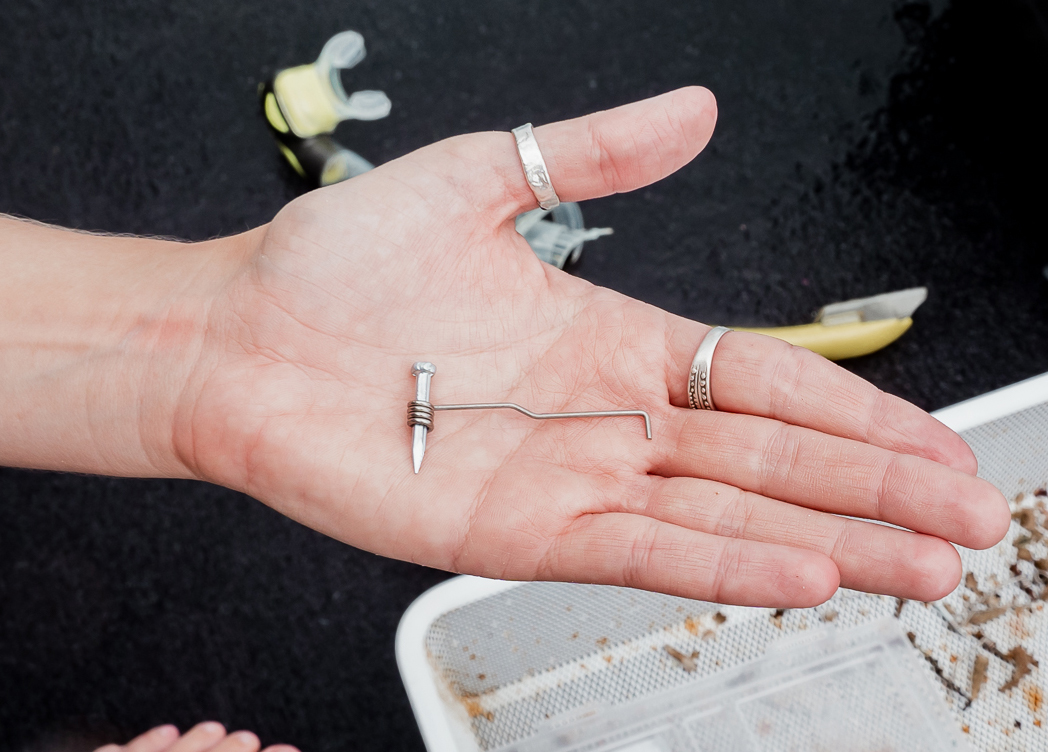
The coral grows over the clip which eventually degrades into iron oxide — in other words, rust. Suggett’s team is currently testing the impact of the iron oxide on the coral and their early results suggest that the iron might even be being absorbed by the coral and increasing their ability to withstand heat.
“It might be that the coral clip gives the coral a little bit of an edge which is an advantage we never even anticipated,” Suggett said.
If the clip works as they believe it does, it could have a truly global impact. Many nations around the world trying to restore their own reefs are less developed, with limited resources. This little metal contraption costs just 10c to manufacture and could be a game changer.
For John though, simply being able to do something to help the reef is enormously rewarding.
“Previously we were helpless,” he said. “So, this is the only real tool in our toolbox that’s available to us to actually be able to do something and that is just a huge thing for site stewardship but also for the morale of all the people involved with Wavelength. It just transforms the way that you feel about these events. You don’t feel helpless anymore.”
Ethical Capitalism
Funding for the reef is in no short supply, but there has long been criticism that the billions of dollars spent are not going where they need to. Take, for example, the $444 million contract granted by the Turnbull government in 2018 to the Great Barrier Reef Foundation; an organisation with just six full-time staff at the time and supported by companies including BHP, Shell, Rio Tinto, and Qantas.
When the Morrison government announced an additional $1 billion in funding for the reef during its fight with UNESCO, critics argued that effective spending of the money already going to the reef, along with regulatory and compliance checks, would be better than simply splashing cash.
Suggett notes that it’s been a struggle getting funding for the Coral Nurture Program, which originally got off the ground through a grant from the Queensland government’s ‘boosting coral abundance’ experiment. Nowadays, they are partly funded by Reeftip, a new Australian spiced rum distilled at the southern end of the Great Barrier Reef. They are the company that paid for me to visit the Coral Nurture Program and see the work that their money is funding.
“Our partnership has been absolutely essential,” Suggett said, explaining that the funding has allowed them to bring additional staff on dives who can plant coral while other staff takes the tourists out.
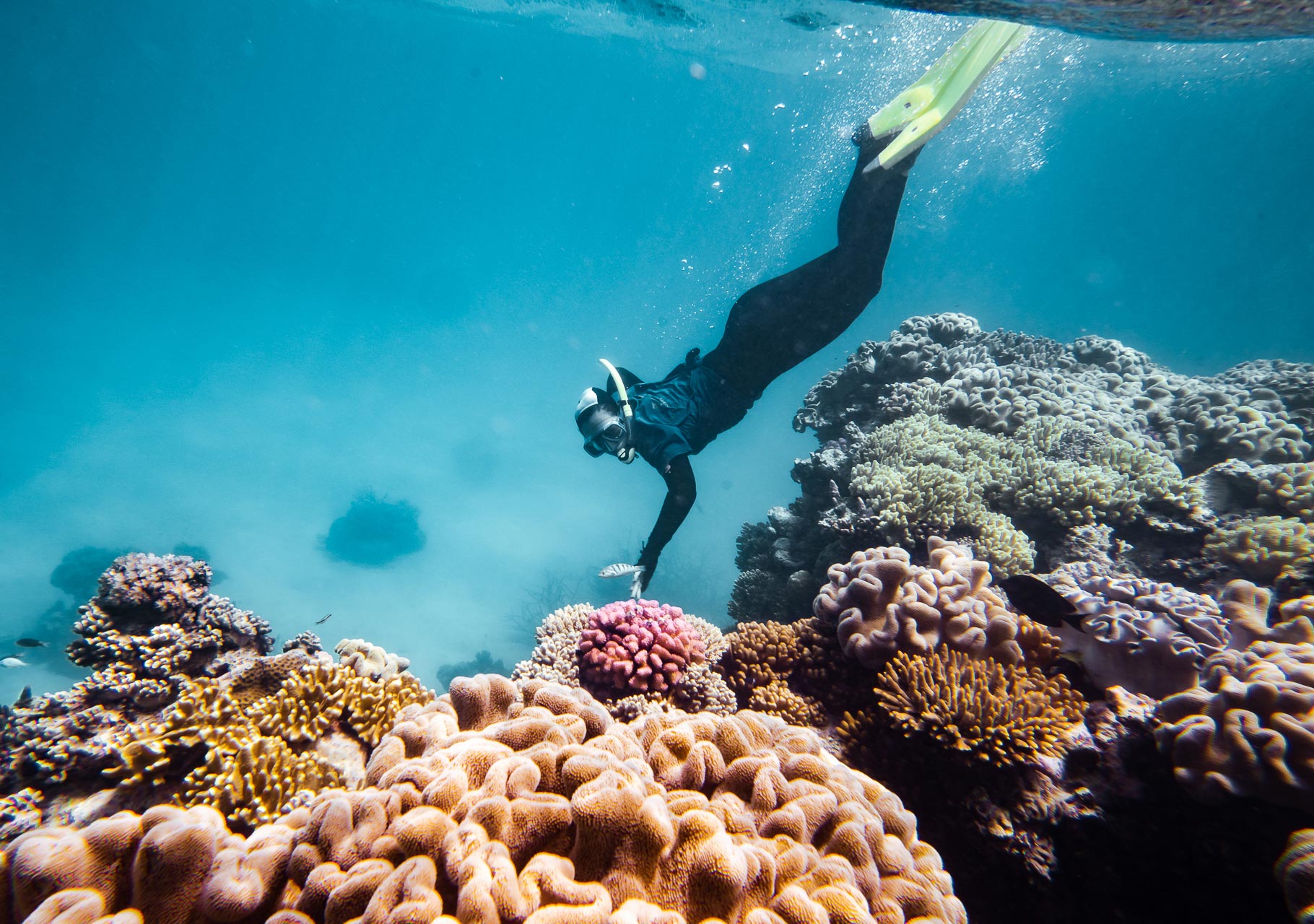
Reeftip donates 10% of its profit to the Coral Nurture Program. They’re owned by Diageo, one of the world’s largest alcohol companies, and, according to them, were established to give back. The project was spearheaded by two employees, Hayden Abercrombie and Matt Miles, both keen surfers, in alignment with the brand’s 25-point environmental strategy that will see the company hit net zero by 2030.
Around a quarter of the roughly 76,000 corals planted by the programme in the last four years is the direct result of funding from Reeftip. And yet, it begs the question as to why a multinational alcohol company would bother with this endeavour. The answer, according to one Diageo representative, is that companies have to adapt to the current market.
Young people, in particular, are increasingly turning away from products they perceive as unsustainable, forcing companies to adapt their offerings. In addition, with a lack of urgent climate action taken by governments, employees at companies like Diageo are demanding their organisations take whatever action they can.
Perhaps less encouraging is the fact that the government, which also funds the Coral Nurture Program, distributes financing through The Reef Trust in partnership with the Great Barrier Reef Foundation. This is the very same company that received the $444 million from the Turnbull government that sparked a Senate inquiry into the decision. They are also the recipients of that extra $1 billion Morrison threw at the problem in January of this year. Projects funded through the partnership have to be signed off by the Minister for the Environment.
The Department of Climate Change, Energy, the Environment, and Water states that “The Great Barrier Reef Foundation is a well-respected charity” that “leads the collaboration of business, science, government and philanthropy to create enduring strategic partnerships”. Those collaborative businesses, as per their website, still include BHP, Qantas, Boeing, and mining company Orica.
It’s clear that these sorts of relationships, born out of necessity and a desire to do good, weigh on the minds of the scientists who find themselves at the mercy of such a system. During an unrelated conversation about research funding, Suggett questioned the ethics of those kinds of decisions:
“It’s become a really complicated world, really, with those sorts of things. There’s so much funding for borderline greenwashing. There’s a lot of money from, say, mining organisations now to do restoration research. Of course, the question is ‘should we be taking that money, when they’re not mitigating their emissions, to do restoration research?’ It’s a hard one”.
Ethical capitalism, as a concept, has no end of detractors, but if the alternative is that no good is achieved, taking the money becomes attractive, even if this perpetuates the cycle. The logic of utilitarianism once again rears its head.
This is made more problematic by the fact that Suggett’s own research implies that coral planting does not significantly restore coral coverage to a reef when compared with natural regeneration. The findings, gathered over a three-year period, show that coral planting only has a real impact when you plant intensively in areas with low coverage already. That being said, doing so “has the ability to shift population structure on impacted reefs to ultimately aid recovery,” the study concludes.
Again, the issue here is size. While it might be useful to plant coral intensively, in areas that tourists frequent, trying to replant the whole reef is just not feasible, something that Suggett freely admits.
Professor Terry Hughes, one of the world’s foremost experts on coral and not affiliated with any of the organisations mentioned, told The Latch that this “begs the question ‘why would you do it?'”
“If you plant, let’s say, 20 corals per square meter, that’s 200,000 coral fragments per hectare. There are 1.1 million hectares of shallow water coral reef habitat on the Great Barrier Reef,” he explained.
Does this mean that any organisation sponsoring coral planting is necessarily engaging in greenwashing?
“No,” Hughes said. “That’s a bit too strong, even for me”.
How to Save a Reef
I started this project uncertain of just what I would see or find on the reef and, naively, had little idea of just how murky and complex the economics, politics, and governance surrounding Australia’s largest tourist attraction are.
The work that is being done by the Coral Nurture Program, the people it employs and the livelihoods it supports, are good. As too is the money coming from every bottle or ready-to-drink can of Reeftip and the scientific discoveries being made about how we can protect coral on a warming planet. The programme is doing more than any other organisation in Australia to replant coral on the Great Barrier Reef and that is something that we need as, in certain circumstances, it can make a difference.
But it doesn’t negate the fact that what the reef really needs is decisive and immediate action taken by our government and others to halt carbon emissions. The rest, as Hughes put it, is “a drop in the ocean”
“The narrative ‘don’t worry about the reef, the clever scientists can fix this’ is very compelling. The general public love it. But it’s, at least with current technology, simply not feasible or affordable at scale,” he said.
“And some of these projects… are actually funded by the fossil fuel industry. BHP is a funder of coral restoration and turtle restoration on the Barrier Reef while also being one of the largest exporters of code across the Great Barrier Reef.
“You have to ask, why are they funding restoration when they’re one of the principal contributors to Australia’s exported emissions?”
The Great Barrier Reef is emblematic of the contradictory stance that Australia holds on climate change. Anthony Albanese is currently vying to host COP31 in partnership with Pacific Island nations but until we can overcome the enticing economic logic of resource extraction, our position remains unsuitable for global climate leadership. We have long been a pariah state at these global meetings and the world will not simply ignore the inconsistencies of our words and actions if they are invited down here.
People like Suggett, like those who go out on the reef every day, operate at the pointy end of the stick. They simply can’t stand by and do nothing while the climate warms, even if they end up swimming in murky waters.
“You’d hoped you’d never be in this position,” Suggett said.
“I mean, growing corals to replant a reef – it is not the situation you necessarily want to be in as a scientist. But, all of a sudden, there’s global demand to do it for lots of good reasons. And we need science to make sure that’s informed in the right way.
“There’s a lot of criticism, in the scientific community, of restoration work, but it’s going to happen. So, do we support it and provide the best objective scientific observation, validation? Or do we just wash our hands and say what’s the point?”
Related: We Went to the Great Barrier Reef to Assess the Damage — Here’s What We Found
Related: Australia’s Environment Minister Feels “Blindsided” That The Great Barrier Reef Is “In Danger”
Read more stories from The Latch and subscribe to our email newsletter.


